When we think about hiking footwear, our minds instinctively picture boots. But in many cases, hiking shoes are a viable option too.
In terms of stability and foot protection, especially when carrying a big rucksack, boots are best thanks to their higher cut and durable construction. By contrast, hiking shoes have low weight and agility as their strong suits and are therefore a popular choice for many hikers, particularly in summer.
As such, avid hikers that hit the trails year-round often have a pair of mountain boots and hiking shoes to ensure they have the right footwear for any given outing.
This guide has been put together by one of our gear experts, Chris Williams, to help you navigate the various types and features of hiking shoes in order to give you the knowledge you need to establish whether hiking shoes are right for you and to find a pair that fits and performs exactly as you need them to.
Hiking shoe diagram: the parts that make up a hiking shoe
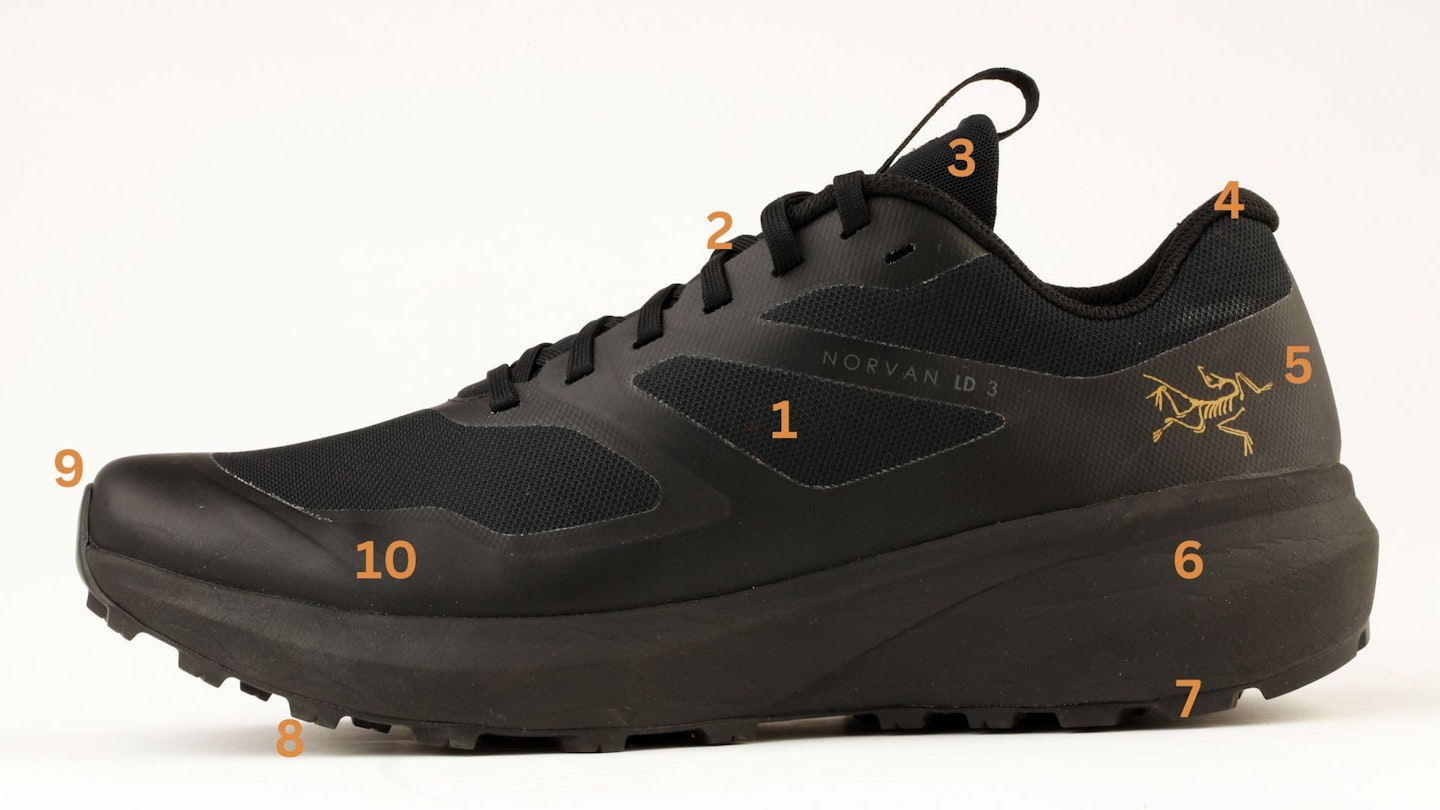
1. Upper
The upper is the part of the shoe that covers the foot and on hiking shoes, is usually made from a synthetic fabric, although there are many leather hiking shoes too, and some have a blend of both.
Those that have a fully synthetic upper are lightweight while also having zero break in time. Leather, on the other hand, is far more durable, and once broken in, extremely comfortable.
It’s also important to know that many hiking shoes feature a waterproof lining behind the outer fabric (be it synthetic or leather).
2. Lacing
It’s essential that your shoes fit properly, so reliable laces are a must. You’re in reasonably safe territory here – almost all the shoes we test these days have quite good laces, although they do vary.
Beyond conventional laces, some have a quick-adjust toggle lacing system (like Salomon’s Quicklace); climbing and approach-style shoes have extended lacing that reach all the way down to the toe in order to get a very precise fit; some even feature a dial-adjusted system like BOA.
3. Tongue
The tongue acts as a barrier between the laces and the foot – it also helps spread the pressure applied from laces more evenly across the foot and avoid pinch points.
Although hiking shoes are always less water resistant than boots due to their lower cut, it still pays to check whether the tongue is gusseted or not. Those with a gusseted tongue are better at keeping water, muck, and debris out of the shoe.
4. Ankle cuff
This is the padded section around the ankle – it’s intended to enhance both comfort and protection. If you want a bit more ankle protection, the mid-cut (a halfway between low cut hiking shoe and full boot height)
5. Heel counter
A heel counter is the firmer section of the shoe that cups your heel. It’s stiffer on some shoes than others and is meant to offer you more stability and increase the shoe's structural strength.
6. Midsole
The midsole provides the cushioning and is usually made from EVA or PU. On hiking shoes, midsoles vary considerably in design from bouncy, super cushioned ones through to much firmer midsoles.
Thick, pillowy midsoles offer a luxurious feel but negatively affect ground feel and precision. They can also compress quite significantly. Tougher midsoles are better when precision and durability are essential – such as scrambling and technical routes.
7. Outsole
This is the underside of the shoe. It’s not just the lug pattern that matters here, compound is crucial too. Brands develop outsole compounds to balance grip and durability. Those that favour grip tend to wear faster; those that favour durability tend to be less grippy. Some try and strike an even balance between the two.
8. Lugs
Like on a car tyre, the tread on a hiking shoe is designed to excel on certain surfaces. Lugs that are deep and widely spaced perform best on muddy terrain; shallower, closer lug patterns grip best on hard surfaces like rock.
9. Toe cap
Work boots feature steel toe caps for protection. Though not steel, some (but not all) hiking shoes feature a stiffened toe for the same reason.
10. Rand
A rand is a protective strip that is applied to the base of the upper and helps guard against abrasion. A rand on a lightweight hiking shoe tends to be quite thin and may only be applied around the forefoot – more technical shoes (such as approach shoes) may have a thicker rand that wraps around the entire shoe.
How to choose the right hiking shoe for the terrain
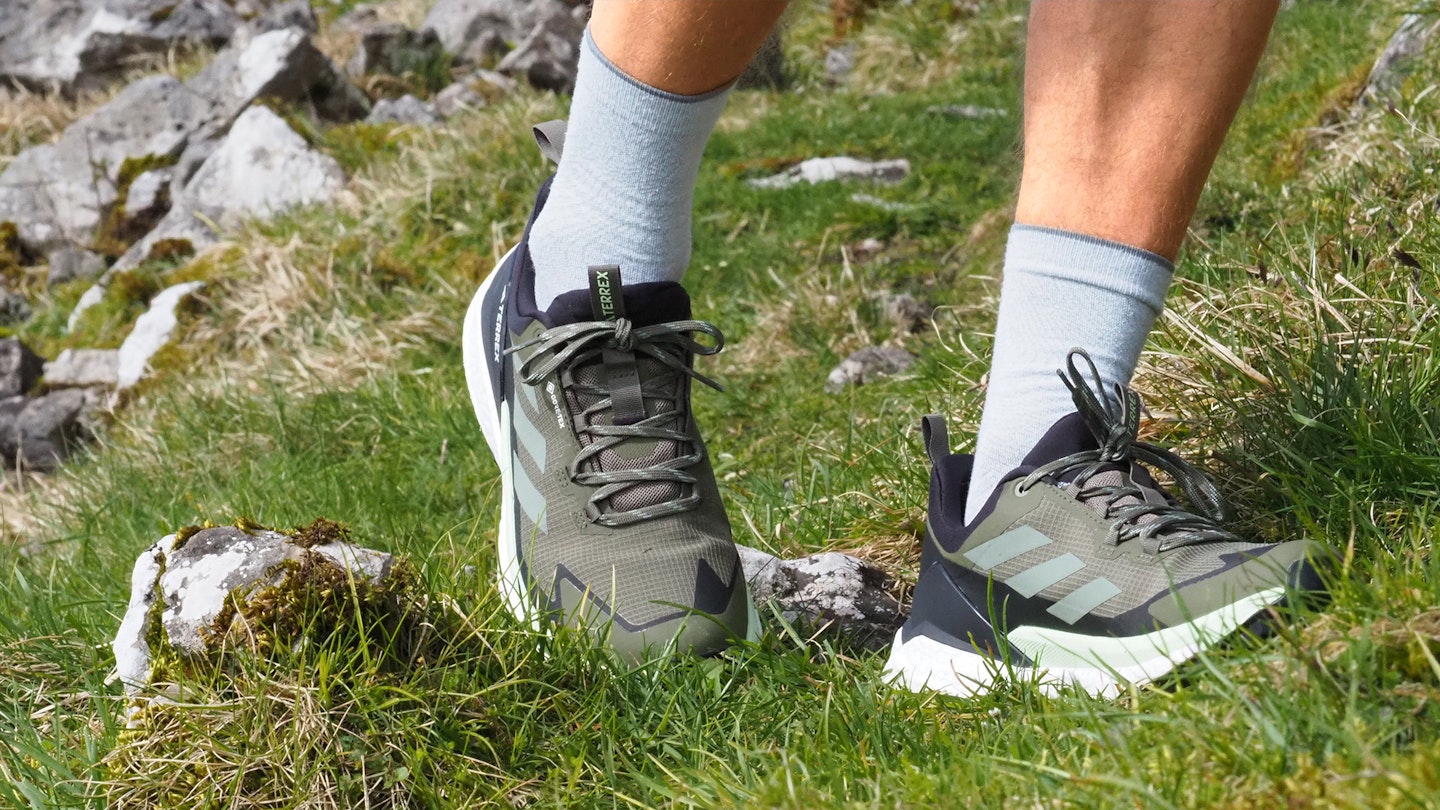
This is your starting point. Getting the right hiking shoe for the types of terrain you tackle on your walks is the most important aspect of buying the right hiking shoe.
Here is our advice for matching hiking shoes with various terrain types:
Managed paths and leisurely trails
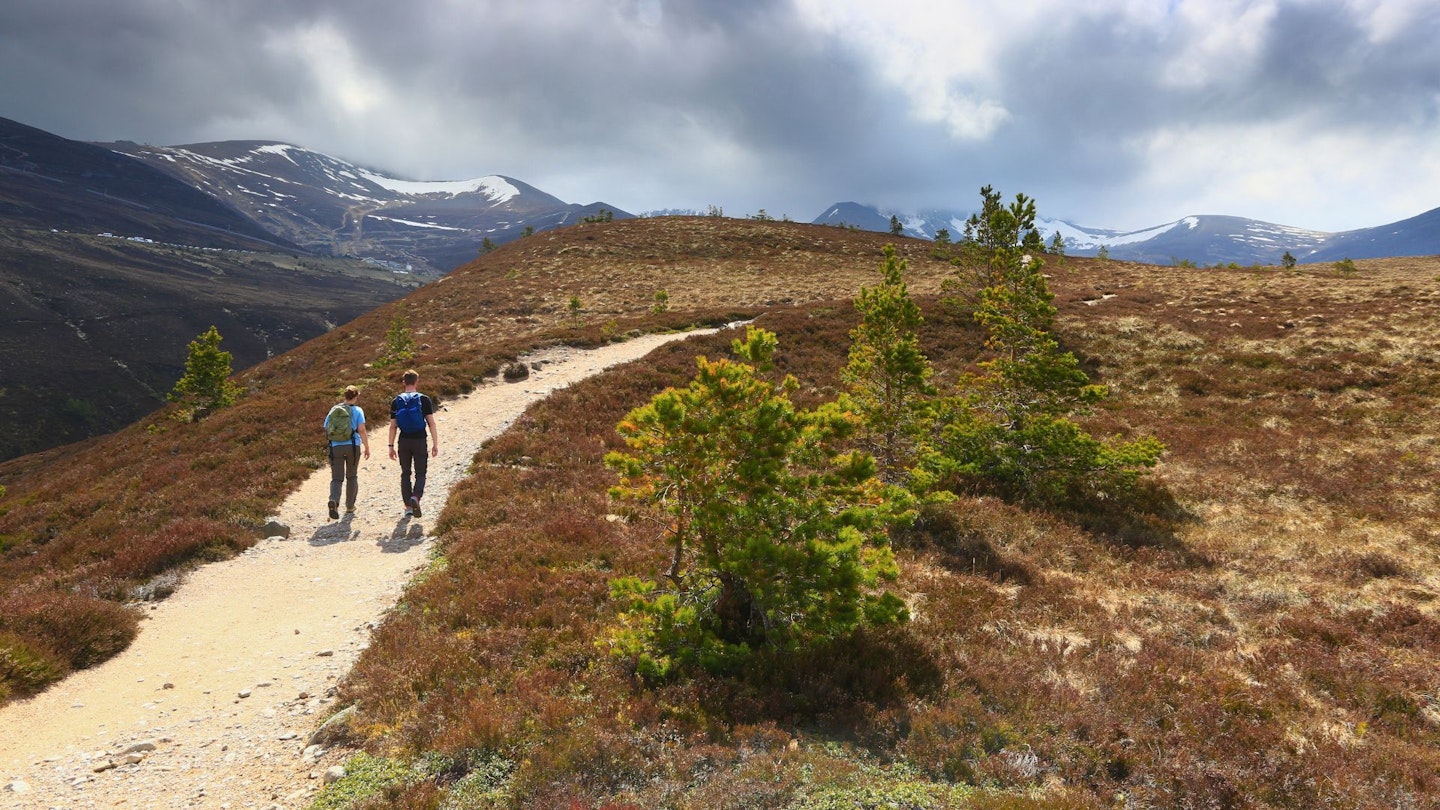
Look for a flexible sole with decent cushioning for comfort on mostly firmer surfaces – particularly if walking more a few hours or more. The lug pattern should offer reliable grip on gravel and rock but doesn't need to be super aggressive.
The upper can be leather or synthetic – this is a personal choice, likewise with choosing a waterproof or non-waterproof model.
Hillwalking and low-level mountain hiking
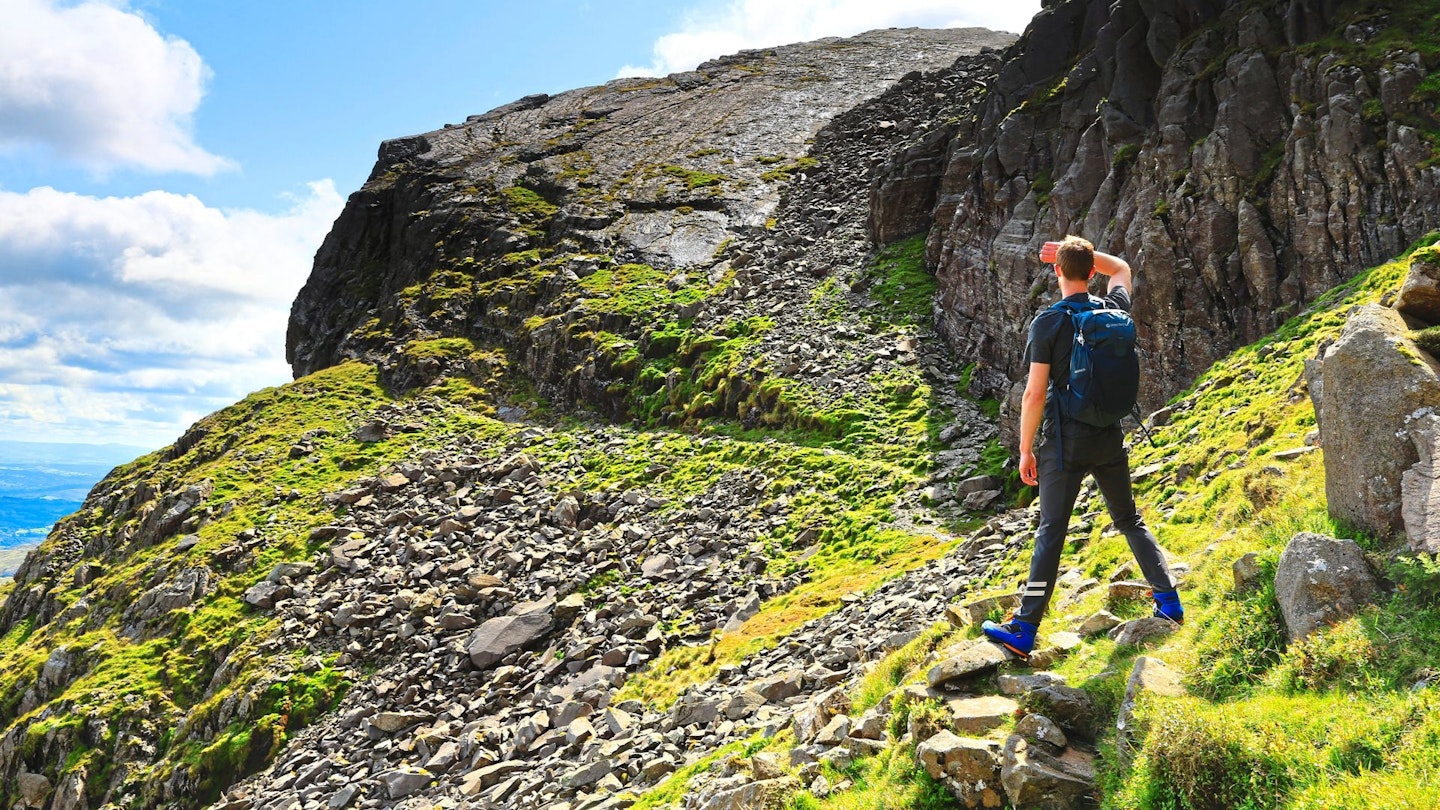
Terrain of this type is more demanding, more variable, and often involves a full day on the trails.
Look for a shoe that has a better balance of cushioning and precision because you will want better ground feel on uneven, hilly terrain. This means the shoe will still have flex, albeit with a slightly stiffer construction to increase stability and security. The lug pattern should be reasonably aggressive to cope with potentially slippery terrain.
Some hiking shoes with synthetic uppers will be suitable, but leather becomes more popular as the terrain grows increasingly demanding because of its superior durability. Waterproofing isn’t essential – but you may want to consider it, depending on the particular hills and mountain routes you want to hike.
Mountain trekking and hiking

This sort of terrain often involves long or multiple days on challenging terrain, and you should prioritise stability and durability.
Underfoot, the shoe should be reasonably stable for precision on uneven terrain and scrambling, and supportive with cushioning for long distances. Tread should be quite aggressive with deeper lugs, suitable for a variety of surfaces.
We’d recommend a leather upper with a decent rand for added protection.
Easy climbing, alpine, and Via Ferrata
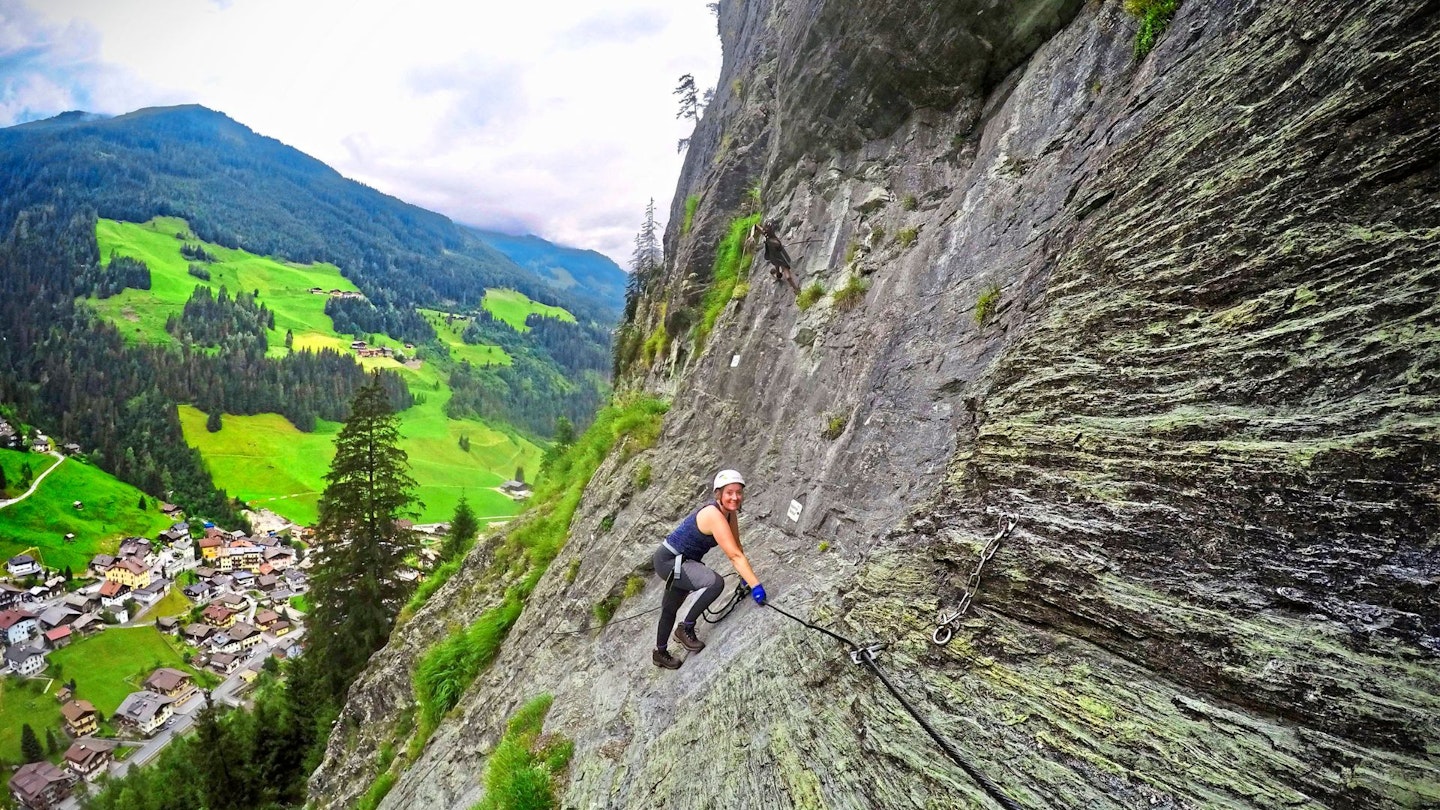
On this type of technical terrain you need a shoe that offers plenty of lateral stability and stiffness with a robust upper, and a sole designed to grip on steep ascents. You’ll find these traits on approach-style shoes, which are designed as a hybrid between a hiking shoe and climbing shoe.
How to get the perfect fit
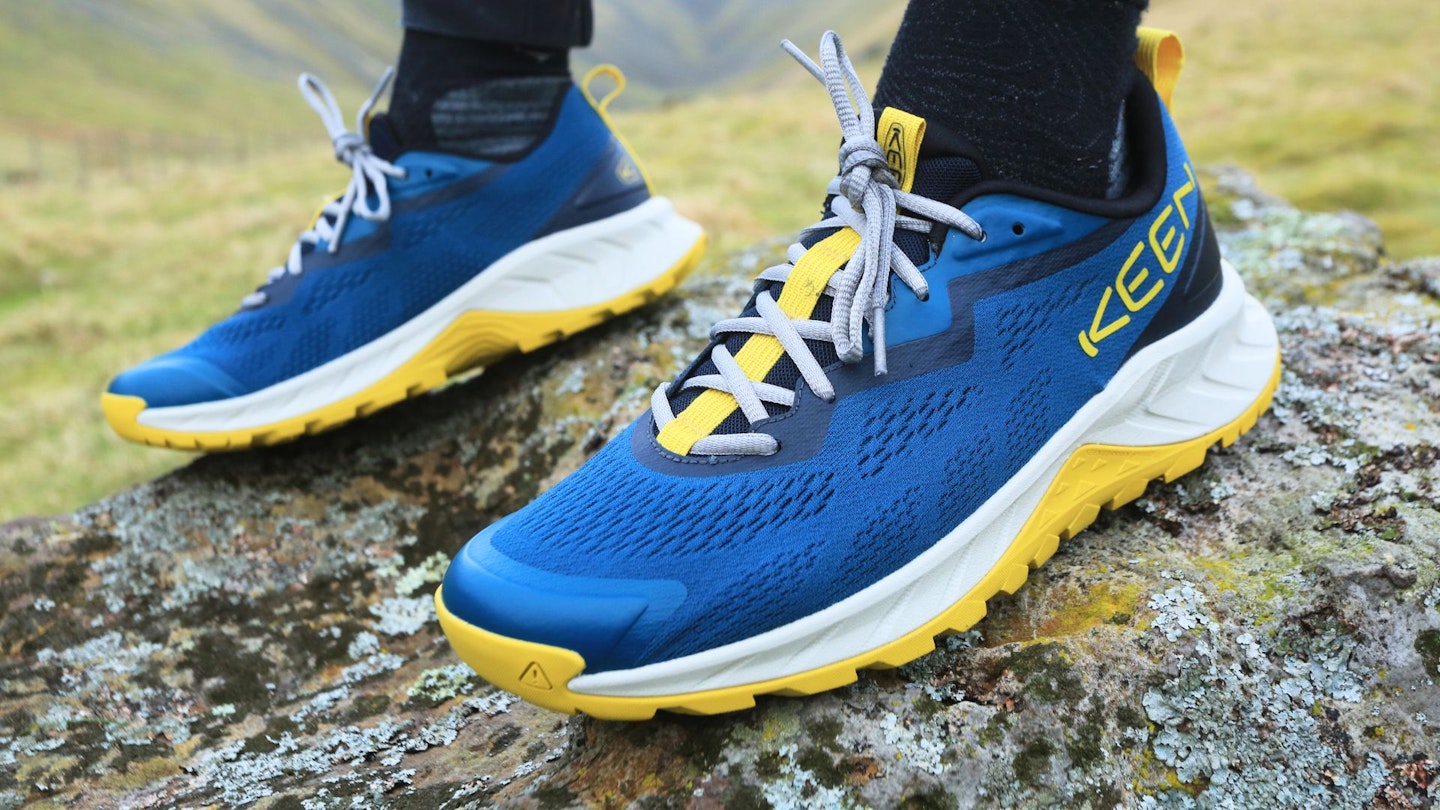
Unlike your everyday sneakers, hiking footwear needs to fit perfectly. The reason for this is that any area of irritation or incorrect sizing can become a major source of discomfort when wearing your hiking shoes over long distances on tricky terrain.
To ensure you find a shoe that fits you properly, here are some key tips:
It’s best to try hiking shoes on in store, because this way you can also get face to face advice from an expert. However, if you can’t go in store or simply prefer to shop online you can of course still get the right fit.
If you can, when buying online, buy two sizes of the shoe you want – one the size you think you need, and the other a size up, then return the size that fits you right. The right fit of hiking footwear is often half a size or a full size larger than you think because you need to allow space for your feet to swell when walking and still have wiggle room at the end for your toes.
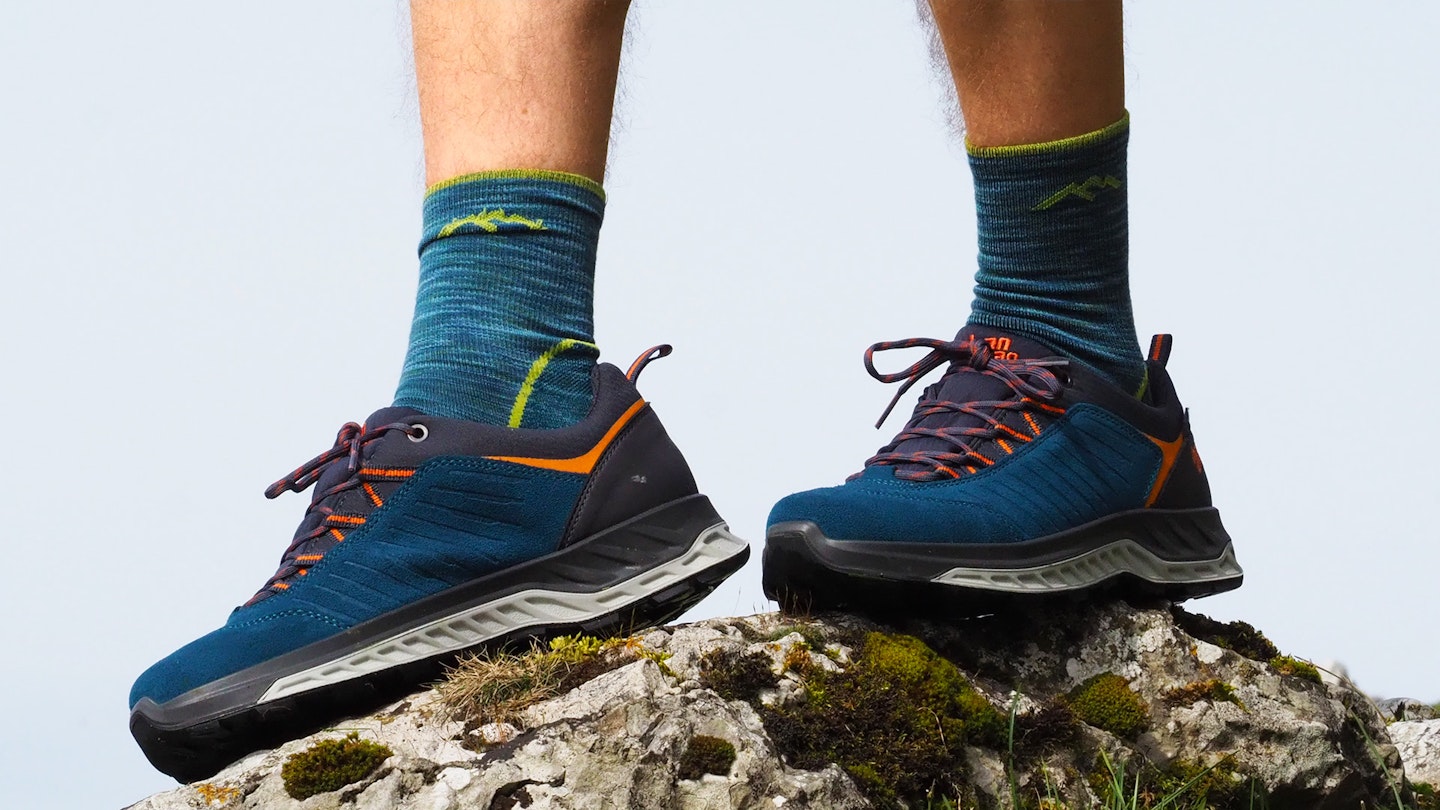
Wear the socks you’ll use for hiking when trying on your shoes – sock thickness affects how a shoe fits.
Also, try shoes on in the afternoon or evening to get a more realistic idea of how the shoe fits after your feet have swollen a bit after a few hours of wear on a hike.
In terms of width, there should be a secure fit at the heel with no looseness or lift and room for your toes to wiggle and splay.
You can check the length by shoving your foot as far forward in the shoe as you can. If you can then manage to just fit your finger behind your Achilles tendon, length is about right.
To ensure the fit is right, wear them around the house for a few days. If you decide they aren’t right, they’ll still be in new condition for you to return and swap for the right size.
Should you buy a waterproof hiking shoe?
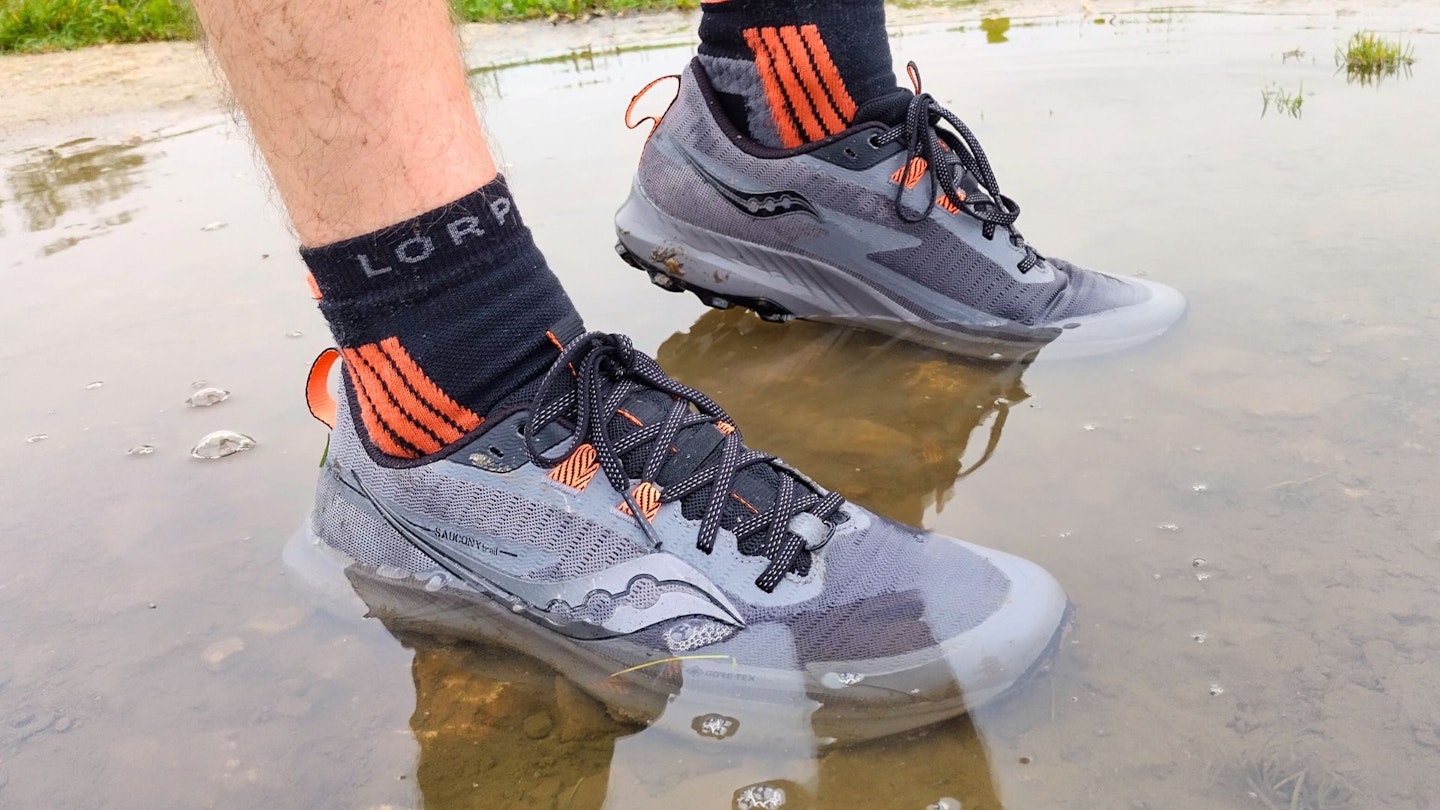
This is a crucial feature on a hiking shoe because a waterproof lining naturally makes a shoe better at keeping water out, but it also has a big impact on breathability.
Many peoples’ instinctive reaction is ‘Yes, of course I want a waterproof shoe,’ but you may not need one. If you’re primarily walking over wet terrain then yes, a waterproof liner will be very useful. Many shoes use Gore-Tex for waterproofing, but brands also their own waterproof linings. For the best water resistance, we’d suggest a leather shoe with a Gore-Tex lining.
However, if you mainly head out on dry trails when the sun is blazing and breathability is more important, we’d advise getting a hiking shoe without any waterproof liner. In addition to much improved breathability, non-waterproof hiking shoes are lighter, faster drying, and less expensive than their waterproof siblings.
Can you use trail running shoes for hiking?
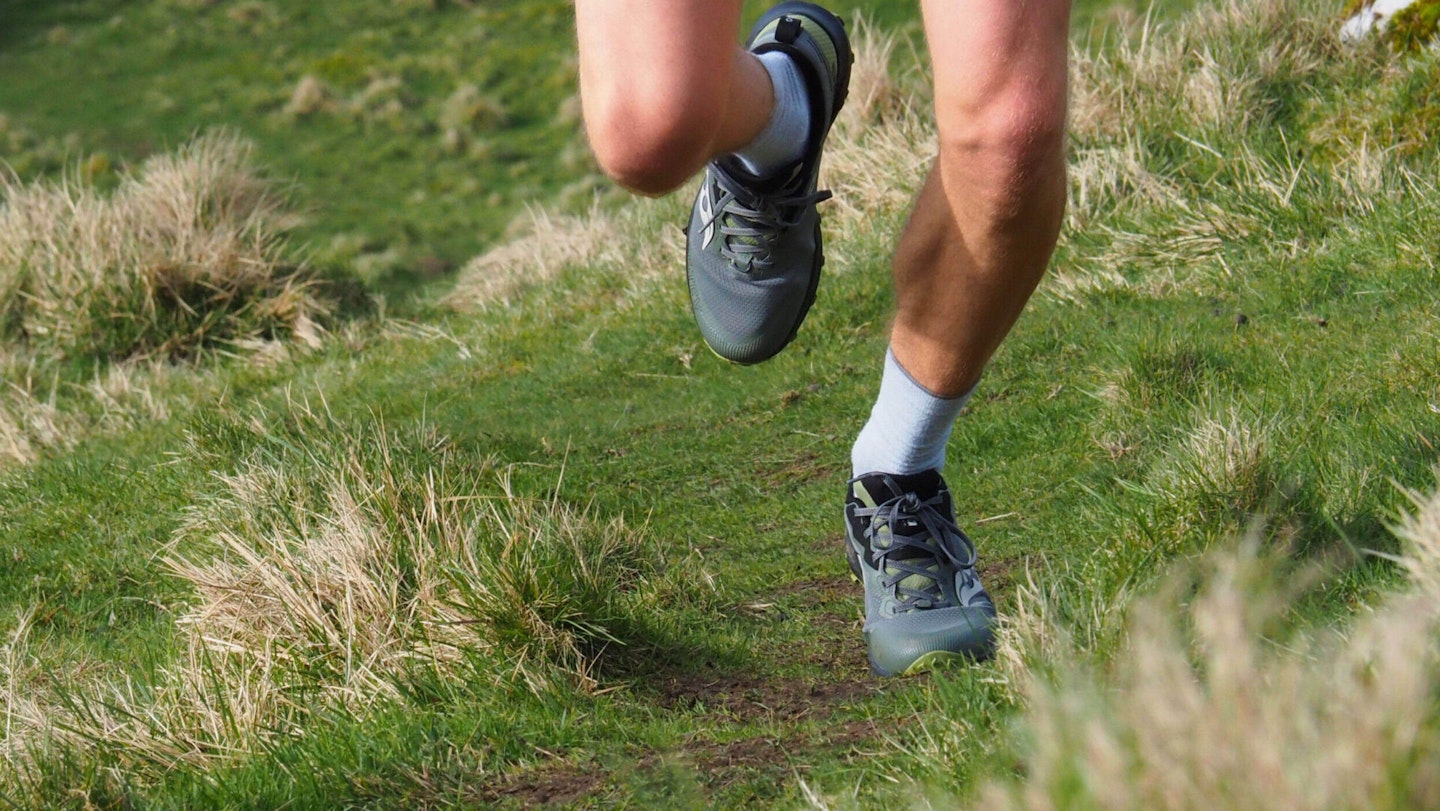
The use of lightweight, more cushioned trail running shoes for hiking is becoming increasingly popular – so much so that shoemakers are incorporating trail running shoe features into some of their hiking shoes.
So, yes you can use trail running shoes for hiking – they excel on firm surfaces like rock, gravel, and hard-packed tracks thanks to their lug pattern and highly cushioned midsoles.
However, they don’t much in the way of durability and overall structural support compared to leather and more technical hiking shoes, so we’d suggest limiting them to on-path routes.
How to choose a more sustainable hiking shoe
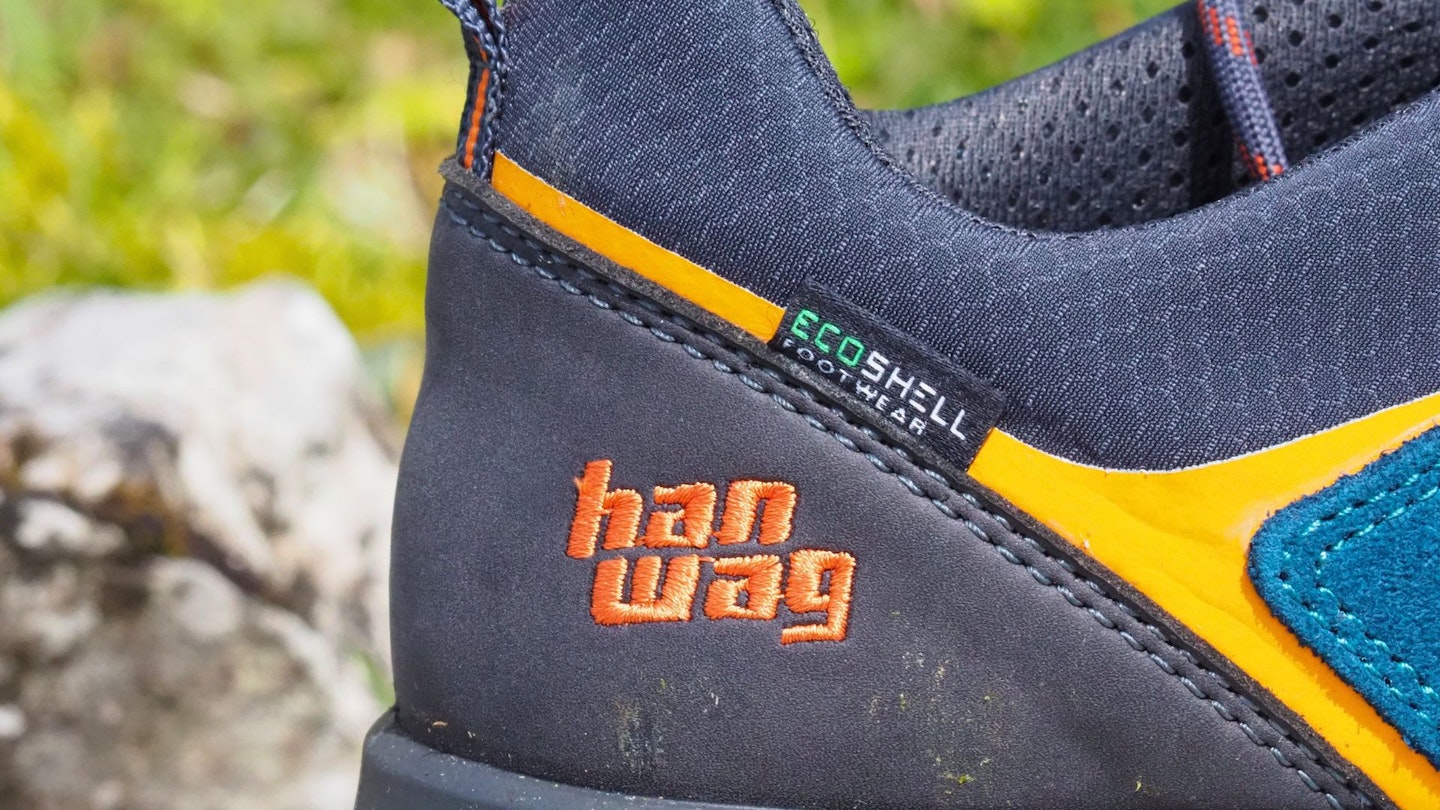
Along with performance and comfort, sustainability is the third crucial pillar to consider when buying outdoor gear. The products we buy impact the people who make them and the planet, so it’s important to choose wisely.
There are a few key aspects to sustainable hiking shoes. One is production. Is the brand you’re buying from transparent about how its shoes are made? A quick background check on the brand via the sustainability section on its website soon reveals the answer. Detailed information that is readily and publicly available and/or respected third party certification from organisations like Fair Wear Foundation or B Lab’s B Corp are good signs. You can also check some of the biggest fashion brands' transparency by going to the Fashion Transparency Index.
Using more sustainable materials is also important. This can be a challenge for synthetic shoes, which rely almost entirely on material from fossil fuels, but check for bluesign-approved and/or recycled fabrics. Being PFC-free is a big sustainability bonus too.
For leather, it should be traceable or Leather Working Group (LWG) certified. Further improving leather eco credentials includes aspects such as chrome-free tanning.
Longevity is one of the most important pillars of sustainability. Beyond a durable, high-quality construction, the ability to be re-soled can at least double the life of hiking shoes in many cases. A brand may offer a resoling service, but there are also specialists such as Lancashire Sports Repairs in the UK that resole footwear too.
How much should you spend on hiking shoes?
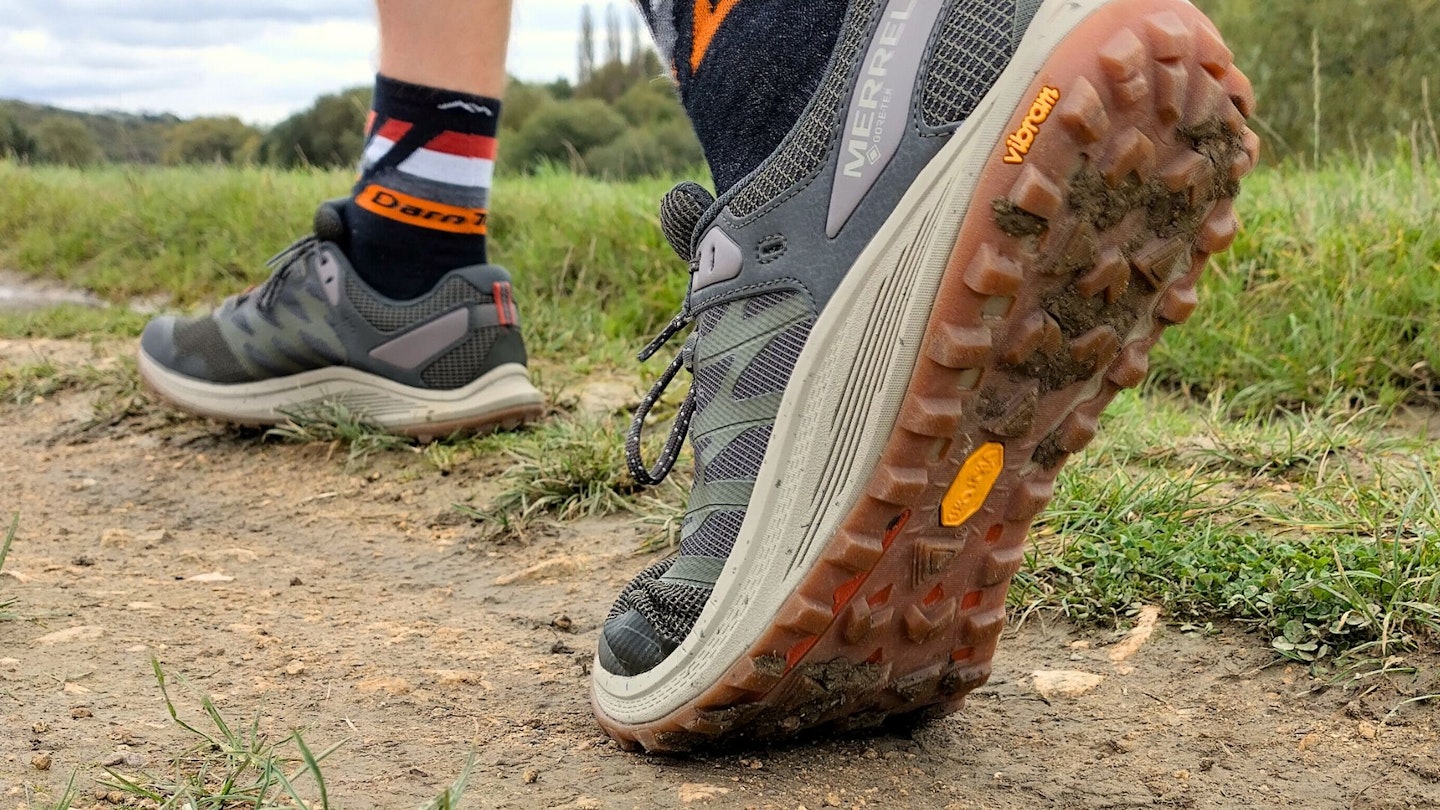
With a price range of anything from £20 to over £200 hiking shoes are available for all budgets.
Our key piece of advice here is that it’s generally best to pay more upfront if it means improved durability, comfort, and performance. Opting for a shoe that can be resoled gives you excellent value in the longer term because it extends the life of your hiking shoes by several years.
Set yourself a budget and then set criteria for the exact type of hiking shoe you need. More often than not, there will be several options within your budget – particularly if you’re after a pair for easier walks and hikes. If the high performance model you need is a bit out of reach, save up for a bit longer if you can. You'll be thankful for doing so when you're scrambling up a mountainside.
Your expert
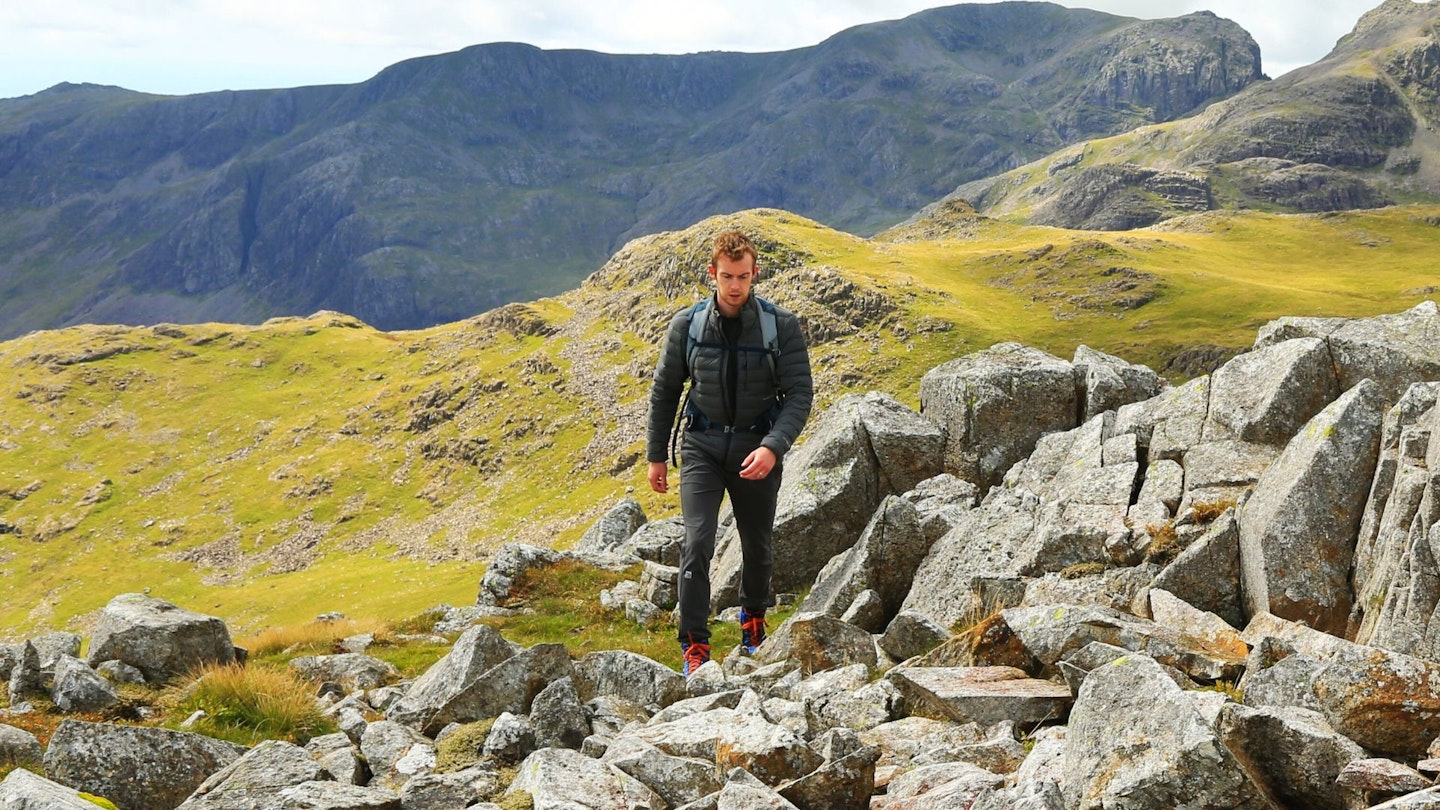
Chris Williams is LFTO’s senior writer and has been with us since 2021. Chris has a wealth of hiking experience both in Europe and his home country of New Zealand.
Crucially, however, Chris also has experience working in retail for outdoor brands and has helped countless customers find the perfect hiking footwear for their adventures.
